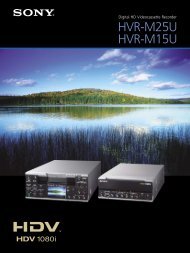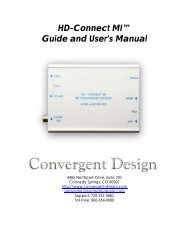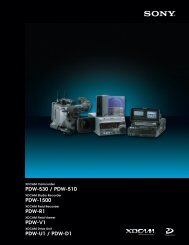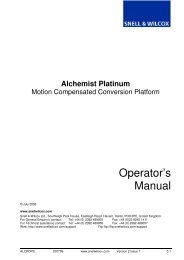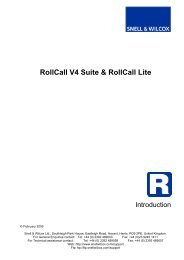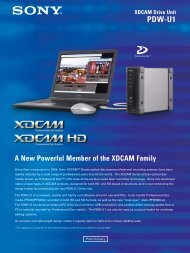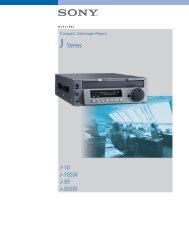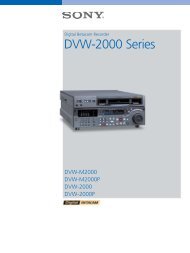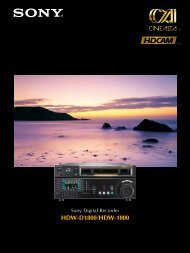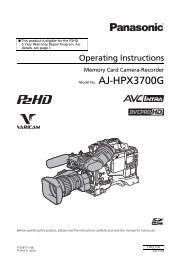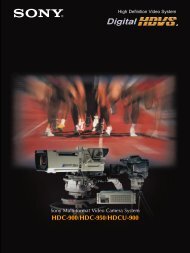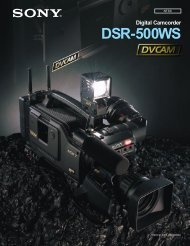HDW-F500 - GRS Systems
HDW-F500 - GRS Systems
HDW-F500 - GRS Systems
Create successful ePaper yourself
Turn your PDF publications into a flip-book with our unique Google optimized e-Paper software.
HDCAM – High Definition Digital Recording<br />
Since Sony introduced the HDCAM format in 1997, it<br />
has been well proven in the USA and Japan, where it<br />
has offered highly mobile and compact 1080/60i<br />
digital acquisition and recording solutions. This highly<br />
reliable and robust format delivers superb picture<br />
quality efficiently packaged onto 1/2-inch tape. The<br />
data rate is such that, compared to other systems, the<br />
tape recordings are inherently more robust and the<br />
running costs are lower due to lower tape consumption<br />
and reduced maintenance requirements. The data rate<br />
also makes possible portable, battery-powered<br />
products such as the <strong>HDW</strong>-F900 camcorder. Also the<br />
HDCAM signal (HDCAM-SDTI) can be routed through<br />
conventional SDI routers and infrastructure. Current<br />
computer graphic workstations can access the HD<br />
signal through their current SDI I/O.<br />
The <strong>HDW</strong>-<strong>F500</strong> VTR acquires each picture frame<br />
according to the industry standard Common Image<br />
Format (CIF) which specifies a sampling structure of<br />
1920 active pixels horizontally by 1080 pixels<br />
vertically.<br />
The state-of-the-art Sony HDCAM compression scheme<br />
is a frame-based digital compression strategy, where<br />
every frame of the signal is treated as a single entity.<br />
By this HDCAM maintains exceptionally high picture<br />
quality and multi-generation robustness for both<br />
progressive and interlace signals.<br />
Advanced digital pre-filtering and dynamic<br />
bit-allocation for luminance and chrominance<br />
components (based on the statistical analysis of the<br />
picture content) are combined with a low compression<br />
ratio of 4.4 to 1 to give a total on-tape recorded data<br />
rate of a modest 185 Mb/s at 60i. On tape the<br />
recordings are protected by very powerful error<br />
correction and concealment strategies perfected<br />
through years of Sony digital VTR development.<br />
The on-tape recording footprint remains the same for<br />
all frame rates. The different rates are accommodated<br />
by changing drum rotation speed and linear tape<br />
speed. What this means is that a recording made at<br />
one frame rate can easily be replayed at another frame<br />
rate with no quality loss. A 24P recording made to<br />
support movie production can be replayed at the<br />
slightly higher 25P and 30P frame rate for television<br />
broadcasting. A common practice made simple by the<br />
<strong>HDW</strong>-<strong>F500</strong>. In this case the <strong>HDW</strong>-<strong>F500</strong> will also<br />
convert audio and time code for correct 25P or 30P<br />
replay.<br />
7



